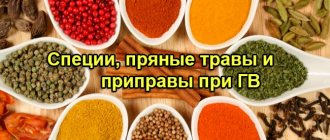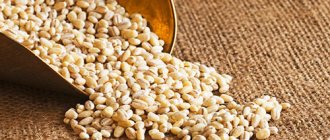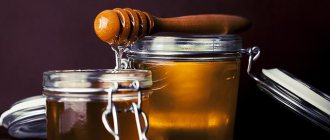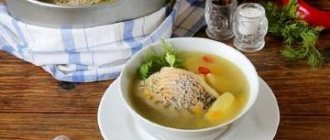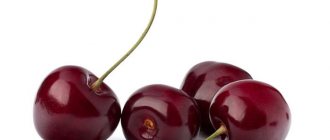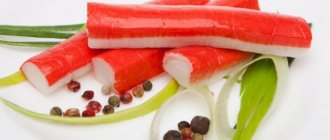During a period of a woman’s life such as breastfeeding, many products cause controversy regarding their safety for the baby, and for the nursing mother herself.
River fish is no exception when breastfeeding, because some doctors and nutritionists call for abandoning this species due to its high allergenicity. At the same time, other experts insist on the need to use this product, arguing for its rich vitamin and mineral composition.
Features of fish
Since the positive properties depend on the type of fish and the method of its preparation, individual points should be considered in detail. Let's figure out what kind of fish can be consumed while breastfeeding:
- Doctors do not recommend salty food. A large amount of salt negatively affects the condition of the kidneys and interferes with the removal of waste and toxins from the body. Salted fish is not beneficial.
- You shouldn't eat fried food either. After frying, not only are there no beneficial substances left, but carcinogens also accumulate. This is facilitated by long-term frying of the product in boiling oil.
- Smoked fish should also not be included in the diet, as it will increase health problems. It does not contain any healing substances: all are destroyed during processing. However, it is not recommended to consume smoked meats due to harmful substances that can cause serious harm to the health of mother and child. Not everyone also knows how to properly cook smoked fish.
- River fish, such as pike, have a large number of bones, but contain necessary substances that are beneficial for the baby and mother. It’s easier to cook soup or steam it, then the taste will not be lost.
- Red fish - salmon, salmon, pink salmon, trout - are recommended to be consumed during lactation due to the sufficient content of omega-3 fatty acid. But even this permitted type should be eaten carefully so as not to cause an allergy in the baby. Red fish, when breastfed in reasonable doses, benefits the body of a nursing woman.
Cooking methods
Some methods of preparing fish can be harmful to a newborn baby.
- 1. Raw.
This fish is used in making sushi and rolls. It is dangerous because it can be infected with worms, which, without heat treatment, remain viable and capable of infecting the mother’s body. Of course, they do not penetrate into the milk, and the baby is not in danger, but during treatment, the mother will feed not only herself, but also her baby with harmful drugs.
- 2. Canned food.
During industrial preparation, potentially dangerous preservatives are added to the product for long-term storage. They can harm a newborn baby. You should not eat this product until lactation ends.
- 3. Smoked, pickled and dried.
Nowadays, preservatives and flavor enhancers are necessarily added to such products. The carcasses themselves are treated with special compounds so that they do not spoil for a long time and have an attractive appearance for the buyer. Therefore, pickled, dried and smoked fish cannot be recommended for nursing mothers.
- 4. Salted fish.
Many people are interested in the question of whether a nursing mother can eat salted fish, because it is not processed with anything harmful. The answer is no, you can’t. The fact is that when it is salted, the fish meat is completely saturated with salt. Excessive salt consumption affects the functioning of the kidneys not only of the mother, but also of the baby. Therefore, we can definitely say that salted fish will only cause harm during breastfeeding.
- 5. Dried.
Salt is always used for drying, and an excess of it in food leads to undesirable consequences. In addition, fish can affect the taste of milk. There is a possibility that an infant will not want to drink such milk.
Many people prefer fried fish. This way, almost all the beneficial substances leave it, and it becomes absolutely useless for consumption. If you ask whether a nursing mother can have fried fish in the first month of her baby’s life, the answer will be that it’s impossible. Only after 4-5 months is it allowed to fry fish and eat it without fried skin.
Which fish do you prefer?
According to reviews of doctors and nutritionists, the following types do not harm the health of the mother and baby, while strengthening the body:
- sole;
- telapia;
- pollock;
- zander;
- bearing.
The more common herring and mackerel can cause allergies, so it is better to limit their consumption to once a week.
Doctors prohibit including large varieties of fish during breastfeeding.
The fact is that they contain mercury, a carcinogenic substance that can cause cancer. Fortunately, such species are practically not common in Russia.
Chemical composition of pink salmon recommended for breastfeeding
Pink salmon is a type of red fish that is known to be considered allergenic. But it is this type of fish like pink salmon that is acceptable for breastfeeding, since it is not grown artificially.
Pink salmon is a special type of salmon that lives in both sea and fresh water.
Its distinctive feature is the color of pink salmon, which changes when migrating from sea to fresh water.
In terms of its composition, pink salmon is rightfully considered a vitamin-rich fish variety. They are easily absorbed in breast milk, which means they enter the child’s body in the required quantity.
- Pink salmon contains a lot of protein, healthy amino acids, and fats.
- It contains vitamins of groups A, B, E and D, as well as many other valuable elements such as phosphorus, iron, calcium, selenium, potassium, sodium, etc.
All of the above elements contribute to the full development of the baby and the normalization of the well-being of a nursing woman. Therefore, pink salmon can and should be consumed during breastfeeding.
How to eat fish during lactation
Despite the abundance of valuable vitamins and taste, fish products can cause allergies, so they should be consumed with caution. It is necessary to constantly monitor the child's reaction.
It can be unexpected: babies can scream and cry. Therefore, any change in the baby’s behavior should be alarming.
Expert advice on what kind of fish a nursing mother can eat, how to choose and eat it:
- You should eat only “familiar” varieties, that is, those that were consumed before childbirth. New ones should be treated with caution, it is better to avoid them altogether. As soon as the baby grows up, experiments with fish can be continued;
- introduce into the diet gradually, starting with 1-2 pieces. If the baby’s reaction has not changed, the portion can be increased, but again, carefully. It is advisable to start with two pieces per week. The advice especially applies to red fish;
- It is better to purchase fresh rather than frozen varieties. The latter contain much less vitamins and differ greatly in taste;
- In the first month after childbirth, boiled fish is more suitable: it is the most useful and is easily digestible. But after the first 30 days you can already enjoy the steamed dish;
- During breastfeeding, women often want to treat themselves to other seafood: squid, mussels, shrimp. It is better not to buy such products in marinade or oil, as this will cause digestive problems. These products are only good when fresh;
- lovers of sushi and rolls will have to hold off on such food. Doctors explain this by the presence of microorganisms in raw fish that can cause poisoning. To prevent the health of a young mother from being in such danger, you should exclude sushi and rolls from your diet;
- if, nevertheless, it was decided to eat frozen fish, you should first defrost it in salted water;
- When purchasing, do not hesitate to smell, touch and check the color of the product: here you should completely trust your feelings;
- do not eat canned food: they contain a lot of oil and flavoring additives, and the fillings in them are rarely fresh;
- in the first days after childbirth, a young mother is advised to eat pollock or hake: these varieties are the most healthy and easily digestible;
- You should not eat red caviar, since the technology of its production and storage is not always known for certain.
How to introduce pink salmon into the diet of a nursing mother
Pink salmon can be included in the diet during breastfeeding, but it should be remembered that excessive consumption can have harmful consequences for the baby.
A few tips on its introduction and preparation will help make the fish safe and healthy:
- Pink salmon should not be consumed while breastfeeding 1 month after the birth of the baby. Most often, it is recommended to introduce it into the diet of a nursing mother after 3 months of the child’s life, provided there is no allergy to fish.
The first serving should be about 30 g. If the child does not experience any negative consequences, you can increase the serving to 200 g.
- It is advisable to purchase pink salmon frozen. So it is safer for the baby’s health. You should definitely pay attention to the quality of the fish. It should not have any unpleasant odors or large amounts of water. The color of the pulp should be pink.
- Pink salmon must be cooked carefully to avoid eating it raw. For this purpose, you can use the method of boiling or steaming.
- You should not overuse salt when cooking pink salmon. This can negatively affect the lactation process, since a large amount of salt provokes a delay in the removal of fluid from the body.
You should not use this product too often. Twice a week is enough, provided there are no other types of fish in the diet. Otherwise, the amount of pink salmon consumed should be reduced.
Answer to the question: “Can pink salmon be breastfed?” no doubt. For a nursing mother and her baby, if used correctly, it will only bring benefits. Tasty and rich in valuable properties, pink salmon during breastfeeding will be an excellent source of energy and vitamins.
Fish is a valuable product, so a nursing mother’s diet should contain different types of dishes. However, not all seafood is allowed during lactation due to possible allergic reactions. It is necessary to figure out whether it is possible to eat red fish while breastfeeding - a very tasty, healthy product.
Recipes
Below are healthy and delicious recipes for young mothers. These dishes will also be useful for the baby, as they contain protein, vitamins and healthy amino acids. However, you should first consult your doctor to know if they are safe to consume.
- Steamed fish
. The dish turns out juicy and tender.
Required ingredients:
- one fish carcass;
- onion head;
- a bunch of parsley;
- a pinch of salt
Cooking method:
- put the fish in a pan, add salt and fill it halfway with water;
- after the water boils, add the onion;
- simmer covered for 20 minutes, then remove from heat.
- Fish pickle soup
will be useful not only for the mother, but also for the whole family .
The following ingredients will be required:
- 300 g hake fillet;
- 2 liters of water;
- 3 potato tubers;
- 4 tbsp. spoons of pearl barley;
- 2 pickled cucumbers;
- vegetable oil;
Cooking method:
- soak the cereal for several hours, preferably overnight;
- put the carcass in cold water and boil for 30 minutes;
- add cereals and prepared vegetables to the broth;
- fry onions, carrots, put in broth;
- add spices and salt.
How to get rid of stretch marks after childbirth?
Fish dishes are not only incredibly tasty, they are easily digestible and supply the body with valuable proteins and fats, vitamins and minerals.
However, is fried fish acceptable while breastfeeding or should a nursing mother refrain from eating it for several long months? Will it cause allergic reactions, digestive problems or other ailments in your baby?
You may have noticed that fish is one of the most popular foods eaten all over the world. At the same time, numerous religious and cultural restrictions on various products, traditionally established in various regions, have safely passed fish, which residents of all parts of the world eat with great pleasure.
At the same time, for residents of some regions, fish serves as the main source of protein. Why is this product so beneficial and is it possible to eat fried fish while breastfeeding?
It should be noted that absolutely any type of fish is a source of valuable proteins that are easily absorbed by our body (fish meat is a low-calorie product). A fish dish is an ideal option for dinner. And if we are talking about fish, steamed, grilled or baked in the oven, then this is just a godsend for those who want to get rid of extra pounds.
But, of course, this is not the most important thing.
It is important to remember that it is from sea fish that our body absorbs polyunsaturated omega-3 fatty acids, which we need to prevent diseases of the cardiovascular system, rheumatism and oncology.
In addition, fish contains valuable amino acids that are not synthesized in the human body.
Fish is a source of various vitamins, namely:
- B vitamins, which normalize metabolism and have a beneficial effect on the functioning of the central nervous system;
- Vitamins A and E, which, acting in combination, slow down the aging process, improve the condition of the skin and hair, and prevent a decrease in visual acuity;
- Vitamin D, which your baby needs to prevent rickets.
Among the micro and macro elements contained in fish, we note, first of all, phosphorus, calcium, fluorine and iron. Ocean fish also serves as a source of iodine, which is necessary for the normal functioning of the body's endocrine system.
This means that a nursing mother should not deny herself the pleasure of eating some fish.
Fish soup
Ingredients:
- Water (2 l)
- fish (300 g);
- potatoes (depending on size - 5-10 pieces);
- carrot;
- parsley;
- tomato paste (2 tablespoons);
- cereal to taste (4 tablespoons);
- salt to taste;
- Bay leaf.
First you need to boil the fish for 25 minutes. After which the carcass should be put aside, and chopped potatoes, grated carrots, tomato paste, cereal, salt and bay leaf should be added to the fish broth. So the soup will cook for another 10-20 minutes until the potatoes are cooked. 5 minutes before readiness, add parsley to the soup. The dish is served along with boiled fish.
During the first month of lactation, the main thing in food is its beneficial properties and safety.
Video Photo
Contraindications for nursing mothers
Of course, fish, like any other product, can cause allergic reactions.
Tuna, eel and catfish are considered particularly dangerous possible allergens in this regard.
If you avoided fish dishes during pregnancy and your baby is completely unfamiliar with this product, start with a small portion of boiled or baked fish. If no rash or redness appears on your baby’s skin after eating a piece of fish, and his health and behavior have not changed, you can safely introduce fish into your daily diet.
So, fish is certainly a valuable dietary product that is perfect for a nursing mother’s menu. But can a nursing mother eat fried fish or should she use other types of warm processing? Apparently, it all depends on the individual characteristics of your baby’s body.
To protect your baby from possible digestive problems, it is better to refrain from eating fried fish, preferring steamed, oven or grilled fish, until the baby is three months old.
In addition, until the end of the lactation process, you should refrain from eating salted, dried or smoked fish, since such a product can be contaminated with pathogens of severe infectious diseases.
What is dangerous for mother and baby?
Mackerel has a lot of beneficial properties, but this fish is quite allergic. And heat treatment does not reduce its allergenic properties.
It is the protein contained in mackerel that most often causes allergic reactions.
- Due to the high salt content in its composition, mackerel often provokes swelling and retains water in the body of a nursing mother.
- Mackerel is toxic because it can accumulate mercury and heavy metals. The conditions in which it was grown significantly affect the quality of the product.
IMPORTANT! Some pediatricians recommend stopping eating mackerel altogether, since its potential toxicity can negatively affect the child’s nervous system.
Fried fish during breastfeeding, important cooking nuances
Since we answered the question of whether it is possible for a nursing mother to eat fried fish, in general, in the affirmative, it would not hurt to learn about how to cook it correctly. Despite the extreme simplicity of the process, fish can easily be spoiled if you do not take into account some of the processing and preparation features of this product.
- If you bought fresh frozen fish, be patient: you should not speed up the defrosting process using hot water: this will negatively affect the taste of the final product. Use salted water at room temperature.
- Wash the defrosted fish, remove fins and scales, and gut. Remember that in the upper part of the carcass there is a gall bladder, which must not be damaged under any circumstances, otherwise the fish will acquire a bitter taste.
- Often river fish, although of excellent taste, has a characteristic smell of mud. Try soaking the fish in milk before frying.
- To keep the fish soft and juicy, breading is usually used. You can simply roll each piece in flour, or you can use a double breading consisting of flour, eggs and breadcrumbs. Double-breaded fish turns out especially tender and juicy.
- Fillet does not require special handling skills. It can be cooked in batter, it is very quick and tasty.
- Before placing a portion of fish into the pan, do not forget to preheat the oil. Fish is usually fried over medium heat. This allows you to get an appetizing, golden brown crust.
As you can see, even a nursing mother can afford to enjoy fried fish. The main thing is not to do this immediately upon returning from the maternity hospital, and, of course, carefully monitor how the baby reacts to a new product on the mother’s menu.
While breastfeeding, young mothers should carefully monitor their diet, making it as healthy and varied as possible. Having heard stories about various allergies and complications after certain foods, mothers deliberately cross out previously favorite dishes from the family menu, not knowing what kind of fish is ok while breastfeeding. This leads to deficiencies of nutrients, vitamins and minerals that are essential for the healthy growth and development of the child.
Can a nursing mother eat fish, which is also considered an allergenic food? Fortunately, the choice of seafood for young mothers is extensive, so the body of the woman and child will not lack proteins, vitamin D and omega acid groups.
Seafood contains fats in the form of unsaturated fatty acids, which help a woman recover faster after childbirth, regulate metabolism and hormone synthesis. In addition, fish proteins are digested in 2-3 hours, while meat proteins are digested in the region of 4-6 hours.
- D, which is rich in tuna, mackerel, mackerel, herring and sardines, helps children's bodies better absorb calcium, which is necessary for bone growth.
- Omega-3 and Omega-6 fatty acids normalize metabolism. These acids are also responsible for external freshness and attractiveness, because they take part in the synthesis of skin tissue. These substances are found in salmon, pink salmon and salmon, so red fish is highly recommended for young mothers during breastfeeding. However, its consumption should be controlled, because these varieties are classified as allergenic.
- Fish is a source of minerals such as calcium, selenium and phosphorus, which take part in the formation of bones, skin and blood vessel walls. Sea varieties rich in iodine reduce the risk of thyroid diseases.
When can you try red fish for the first time during breastfeeding and in what quantity?
Such dangerous possible side effects make red fish not the best product for the first months after childbirth. Pediatricians recommend introducing such a product into your diet no earlier than the baby is 3-4 months old, and this should be done as carefully as possible.
When trying red fish for the first time, eat a very small piece, about half a teaspoon in size. If nothing happens to the child within a couple of days - he does not behave restlessly, spots do not appear on his skin, and there are no problems with digestion, then after a couple of days you can try to increase the portion.
It should be remembered that you should pamper yourself with seafood delicacies no more than 2-3 times a week.
If your baby nevertheless reacted poorly to a new product on your menu, then postpone the introduction of red fish for a month and a half. Perhaps after this time, the baby will get stronger and will normally accept new food.
What kind of fish can you eat while breastfeeding?
- a real champion in the content of Omega-3 acids, but it is a fairly allergenic product, so it should be consumed in moderation, first of all paying attention to the child’s reaction.
If you are one of those who are wondering whether it is possible to eat salted fish while breastfeeding, the answer is obvious - it is not recommended. Salted and lightly salted fish contain a large amount of salt, which leads to an imbalance in kidney function and the appearance of edema.
Dried and dried fish, although it does not pose any serious harm to health, due to the increased salt content that accumulates in the thoracic ducts, the taste of the milk will change. The baby will most likely refuse to feed.
River species, when properly prepared, will be beneficial for the body, although they contain too many bones. If you cook them without using oil, and, for example, steam them or cook soup, then such a dish will not lose its beneficial qualities. It is allowed to eat low-fat fish - perch, pike perch, pike, but it is better to abstain from carp, crucian carp, carp and trout for several months.
It is not recommended to include fried fish in food due to the fact that all beneficial substances are destroyed during frying in oil. This is especially true for fatty fish - fried mackerel during breastfeeding puts unnecessary strain on the mother's gastrointestinal tract, which, accordingly, affects the child.
You should wait until the sixth month to eat caviar during breastfeeding, as it can cause allergies. It also changes the taste of milk, making it salty.
You can safely buy the following varieties: hake, pollock, tilapia, silver carp and bream, but flounder and pangasius should be introduced into the mother’s diet carefully, because they can cause allergies.
Cooking methods
Some methods of preparing fish can be harmful to a newborn baby.
- 1. Raw.
This fish is used in making sushi and rolls. It is dangerous because it can be infected with worms, which, without heat treatment, remain viable and capable of infecting the mother’s body. Of course, they do not penetrate into the milk, and the baby is not in danger, but during treatment, the mother will feed not only herself, but also her baby with harmful drugs.
- 2. Canned food.
During industrial preparation, potentially dangerous preservatives are added to the product for long-term storage. They can harm a newborn baby. You should not eat this product until lactation ends.
- 3. Smoked, pickled and dried.
Nowadays, preservatives and flavor enhancers are necessarily added to such products. The carcasses themselves are treated with special compounds so that they do not spoil for a long time and have an attractive appearance for the buyer. Therefore, pickled, dried and smoked fish cannot be recommended for nursing mothers.
- 4. Salted fish.
Many people are interested in the question of whether a nursing mother can eat salted fish, because it is not processed with anything harmful. The answer is no, you can’t. The fact is that when it is salted, the fish meat is completely saturated with salt. Excessive salt consumption affects the functioning of the kidneys not only of the mother, but also of the baby. Therefore, we can definitely say that salted fish will only cause harm during breastfeeding.
- 5. Dried.
Salt is always used for drying, and an excess of it in food leads to undesirable consequences. In addition, fish can affect the taste of milk. There is a possibility that an infant will not want to drink such milk.
Many people prefer fried fish. This way, almost all the beneficial substances leave it, and it becomes absolutely useless for consumption. If you ask whether a nursing mother can have fried fish in the first month of her baby’s life, the answer will be that it’s impossible. Only after 4-5 months is it allowed to fry fish and eat it without fried skin.
How to choose a quality product?
- First of all, check the integrity of the packaging and the expiration date of the product. If the vacuum packaging is broken, swollen or slightly open, such fish should not be taken.
- If you buy fish at the market, then pay attention to the appearance - the scales should be intact, without damage or open ulcers, the gills should be clean and red, the eyes should not be covered with a white veil. The carcass should not be sticky or have an unpleasant musty odor.
- When purchasing frozen fish fillets and shrimp, you should avoid a thick layer of ice, as this indicates a violation of storage rules.
- You should not buy fish marinated in herbs and spices, because dishonest sellers often disguise a stale product in this way.
What fish should a nursing woman not eat?
If a woman regularly consumed fish during pregnancy, then after the birth of the child there is no need to limit its consumption. But here you need to carefully monitor the baby’s reaction to the new product - at the slightest sign of an allergy (redness of the skin, the appearance of a rash) or indigestion, you should stop the experiment.
Ocean seafood is prohibited for nursing mothers due to the mercury content in its meat. Canned food in various sauces (saury, sprat, capelin) is also excluded.
You should exclude smoked, salted, dried and fried fish, giving preference to boiled and stewed dishes. In later months, baked dishes are allowed.
During lactation, eat fish dishes no more than 1-2 times a week.
Fish: pros and cons
Fish is rich in fats and amino acids, vitamins and proteins. It should be emphasized that these elements are absorbed in the body very easily. By eating fish 3-4 times a week, you fully meet your protein needs, that is, it is an alternative to meat. Don’t forget about the wonderful fish oil, which will be useful both for the mother’s recovery after childbirth and for the growth and development of the child himself. However, despite all the beneficial properties, you should not eat only fish, much less eat it indiscriminately.
What harm can fish cause to mother and child? The only thing that can be said about this is that it is a fairly strong allergen. That is, first of all, you need to figure out what kind of fish is suitable for nursing mothers, and only then decide at what age and in what quantity to include it in the diet.
How to introduce it into the diet?
After birth, a child begins to adapt to the world around him, and in order to avoid unpleasant and sometimes dangerous consequences, each new product must be introduced wisely.
In the second month, a nursing mother is allowed to eat a piece of cooked fish, which would not be more than 50 grams (sea bass, catfish or other). If the child does not develop redness or rashes, then after a few days try to eat the same amount. Next, monitor the baby, and if there is no negative reaction, fish dishes can be added to the diet.
How to replace dried fish during lactation
Properly organized breastfeeding benefits the baby and his mother, so you should pay close attention to the diet and not choose foods that can harm this process.
If it’s hard for you to deny yourself salty foods, it’s better to replace dried fish with lightly salted fish. Fresh or chilled fish is most beneficial. One that has been frozen or, especially, repeatedly defrosted and re-frozen, loses up to 70% of all nutrients. This semblance of fish no longer has any nutritional value.
Fish recipes
Before cooking frozen fish, it must be thawed in salted water, preserving all the beneficial substances inside the carcass.
Stewed fish with apples
Ingredients:
- Dorado fillet
- - 1 piece
- Butter
- Bulb
- Sour cream - 50 grams
Cut the apple into medium slices, chop the onion and simmer them in a frying pan in butter for 5-7 minutes. The onion should take on a golden hue. Wash the fillet and pat dry with a paper towel, collecting excess moisture, add salt and add to the stewed apples and onions. Leave covered to simmer for 30 minutes. Serve the dish with sour cream.
Steamed fish
Ingredients:
- Low-fat fish (bream, pike perch, carp) - 1 piece
- Vegetables as desired
Remove scales and gut the fish. Cut the carcass into medium pieces and place in a double boiler. If desired, you can add a vegetable side dish (potatoes, broccoli, zucchini, carrots). Leave for 25-30 minutes.
This recipe is ideal for starting to introduce fish into the diet if the child reacted normally to boiled fish.
Baked pike with apples
Ingredients:
- Pike – 1 piece
- Apples - 2 pieces
- Butter
- Fresh herbs
Wash the apples and cut into large slices. They will be used as a pillow, so place them on the bottom of a baking tray, greased with oil. Clean the pike from scales and soak in salt water for several hours to rid the meat of the river smell and taste. Then transfer the fish to an apple bed and brush with butter. If desired, cover the baking sheet with foil or parchment to make the dish more juicy. Bake in an oven preheated at 200 degrees for 40-45 minutes.
Baked cod in batter with herbs and lemon juice
This dish is suitable for lunch or dinner. As a side dish, you can serve boiled or steamed vegetables or a green salad.
Ingredients:
- Cod fillet – 300 grams
- Onion - 1 piece
- Fresh herbs (parsley, dill)
- Lemon juice - 1 tbsp.
- Ground pepper
- - 1 piece
- Breadcrumbs
- Butter or olive oil
Rinse the cod fillet under running water, pat it with a paper towel, collecting excess moisture. Cut the fillet into four equal pieces. In a separate bowl, beat the eggs until smooth, add salt and pepper. Dip the fish pieces into the egg batter and then into the breadcrumbs, fry in butter for a few minutes on both sides to seal the batter.
Cut the onion into rings. Then take foil and cut out large squares, place onion rings in the center, and place cod pieces on top. Salt and pepper each piece, sprinkle with lemon juice and sprinkle with finely chopped parsley and dill. Fold up the foil, carefully pinching the corners to keep the juices inside. Place the bundles on a baking sheet and bake in an oven preheated at 200 degrees for 40 minutes.
Serve on a plate with foil-lined envelopes slightly opened.
To sum up all of the above, we can say with confidence that fish must be included in the diet of a nursing woman. The main thing is to start with small portions, choose only fresh and high-quality fish and adhere to the rules of heat treatment. And then the body of the mother and child will receive all the necessary substances for healthy growth and development.
The health of a nursing mother and general well-being largely depend on how she organizes her diet. It should be varied and high enough in calories to replenish the mother’s body’s costs of producing breast milk.
The World Health Organization believes that fish and seafood should definitely be present on a mother’s menu, since they contain valuable components that are not found in other products.
And yet, in some cases, fish must be excluded from the diet. This product is a strong allergen, therefore it is contraindicated for mothers during periods of exacerbation of allergic processes and if the child suffers from exudative-catarrhal diathesis.
What are the benefits of pink salmon during lactation?
There are many beneficial properties of pink salmon during breastfeeding. Among the main ones are:
- Significantly improves the functioning of the nervous system of a nursing woman and baby.
- Has a positive effect on metabolism and gastrointestinal tract functions. This is especially important for infants who are prone to digestive tract disorders.
- Pink salmon contains a large amount of water, which helps restore and maintain water balance. During breastfeeding, this promotes lactation.
- Improves the condition of teeth and hair growth.
- Promotes the normal functioning of the endocrine system due to the iodine content in pink salmon.
Due to the presence of unsaturated fatty acids in such fish, eating pink salmon reduces the likelihood of cancer.
- Pink salmon is a low-calorie fish variety. Its calorie content is about 150 kcal / 100 g of product. In addition, the special chemical composition of fish helps accelerate metabolism, and hence weight loss. At the same time, it is filling and nutritious, which allows the body to quickly become satiated and helps reduce appetite.
- Regular moderate consumption of pink salmon slows down aging and improves the mood of a young mother.
- It is especially important to include pink salmon in the diet for women who have problems with the cardiovascular system. It has a beneficial effect on its condition and functions.
In what cases can pink salmon be harmful?
Valuable microelements contained in pink salmon are indispensable for the body. However, in some cases, eating such fish can have negative consequences.
Pink salmon is contraindicated for women with chronic dysfunctions of the gastrointestinal tract and liver.
If you are allergic to fish, you should not try to introduce it into the diet at least in the first six months of the child’s life.
The benefits of fish and seafood during breastfeeding
While breastfeeding, you can eat different types of fish. It is better to give preference to marine inhabitants. They contain more iodine and healthy fats.
Red fish during breastfeeding should be included in the diet at least twice a week. This species includes pink salmon, salmon, chum salmon, and trout. Red fish is the leader in the content of Omega-3 fatty acids. Herring, capelin and mackerel contain them in sufficient quantities. Fatty acids are of great value to the human body:
- normalize lipid metabolism, preventing the appearance of atherosclerotic deposits on the walls of blood vessels;
- reduce the risk of coronary heart disease and heart attack, stroke;
- strengthen the smooth muscles of the vascular walls, normalize their tone, improve peripheral and capillary
- circulation;
- normalize heart rate;
- improve brain function, increase memory and intelligence;
- help strengthen nails and hair, have a beneficial effect on the skin;
- reduce the risk of developing cancer;
- They are a building material for the body’s cell membranes and accelerate the processes of regeneration and repair.
Consumption of fatty fish will benefit not only the mother herself, but also the baby, because essential fatty acids during breastfeeding will enter the baby's body along with milk, which will have a beneficial effect on physical and mental development.
Fish and seafood are the main source of iodine.
This element serves as an integral part of thyroid hormones, and they are necessary for the child for growth and intellectual development. The richest in iodine are flounder, haddock, shrimp and mussels. A nursing woman can also consume seaweed to meet her daily iodine needs.
For the proper formation of the musculoskeletal system and the functioning of the nervous system, the baby needs vitamin D and calcium.
To maintain the concentration in breast milk, it is enough for the mother to eat 200 g of red fish 2-3 times a week. This must be done in the autumn-winter period, when there is not enough ultraviolet radiation in the surrounding space.
Vitamin D
necessary for the baby for the growth of teeth and bones, the formation of neuromuscular conductivity (restores the myelin sheaths of the nerves), and for the mother for the prevention of osteoporosis, slows down the growth of tumors in the body.
Seafood contains minerals and trace elements:
- phosphorus;
- zinc;
- cobalt;
- copper;
- sodium;
- magnesium;
- manganese;
- potassium.
phosphorus content
, it, together with calcium, is included in the structure of bones and teeth, participates in protein, fat and carbohydrate metabolism. It is part of RNA and DNA molecules, a catalyst for energy processes in the body.
When breastfeeding, you can consume fish by-products: caviar, milk, liver. Caviar contains protein
, which is absorbed faster and easier than proteins from meat and dairy products,
fat-soluble vitamins E and A, D
in high concentration,
folic acid.
Consuming this product will help increase the level of hemoglobin in the blood and is an excellent means of preventing anemia.
Pollock and cod liver contains vitamin A (retinol)
, which is part of the rhodopsin molecule (the pigment responsible for night and twilight vision) and improves visual function.
Retinol
is an antioxidant, stimulates the synthesis of collagen fibers, eliminates inflammatory processes in tissues and enhances their regenerative abilities.
Vitamin A
is a natural immunostimulant, increases the protective functions of mucous membranes, the activity of leukocytes, and improves local immunity.
The most nutritious milk is from salmon and sturgeon. In addition to protein and fatty acids, they contain protamine
, these include
essential amino acids, glycine
, necessary for brain activity,
immunomodulators (sodium salt of DNA).
Fish is a source of easily digestible protein; a 250 g portion of fish fillet can fill your daily requirement for this substance.
Is it allowed in baby food?
Pediatricians have differing opinions on this issue. As a fish supplement, mackerel is too heavy , as it contains a lot of fat. Its ability to accumulate mercury and high allergenicity do not allow this fish to be used in the early years of a baby’s life. The load on the liver will be too high.
When can it be included in the diet?
After feeding meat, they usually start eating fish. Pediatricians recommend it for babies from 10 or 11 months of age.
ADVICE! It is strictly forbidden to give meat dishes to a baby on the same day as fish.
But the baby may not try mackerel any time soon. The first varieties with which it is usually recommended to start complementary feeding are cod, hake, and pollock .
But fatty varieties, including mackerel, are recommended to be given after reaching 3 years of age. Fried and smoked mackerel can also be offered when the child is over 3 years old.
Preferred cooking methods
Boiled and baked mackerel is most useful. Retaining all the substances and microelements, this cooking option does not harm the health of mother and baby. Mackerel can also be stewed with vegetables, without adding salt or seasonings. Frying mackerel is not recommended, as this processing option is the most carcinogenic.
Benefits for the baby
Mackerel contains beneficial Omega-3 fatty acids , which contribute to the normal formation of the nervous system and brain. Also, they increase the child's mental abilities. Vitamin D helps improve the absorption of calcium, which promotes good development of the skeletal system.
Fish dishes for nursing mothers
- Pollock baked with vegetables: cut zucchini, tomato, broccoli. Place the vegetables on a sheet of foil, place boneless pollock fillet on top, add salt, and wrap the foil tightly. Bake for 20 minutes at 180-200 degrees.
- Steamed salmon with potatoes in a slow cooker: wash the fish, rub with salt and lemon juice, cut the potatoes into cubes. Pour 1 liter of water into the multicooker bowl, place the salmon and potatoes in the steaming container, close the lid tightly and cook for 30 minutes using the “steam” program.
- Pink salmon soup: rinse the pink salmon, add water and cook for 30 minutes, skimming off the foam. Chop the potatoes, onions, herbs and add to the fish, cook until tender.
